Difference between Sony Xperia J and Nokia Lumia 520
Key difference: Xperia J was announced in October 2012 as a cheaper variant of the Xperia T, resulting in the phone sporting a similar design to the T. The Xperia J features a 4-inch scratch-resistant TFT touchscreen that offers a pixel density of 245. The Nokia Lumia 520 is a 4-inch IPS capacitive touchscreen smartphone that offers 480x800 pixels display, which offers approximately 233 ppi. The phone comes with 8 GB internal memory that can be expanded up to 64 GB. The phone offers 1 GHz on its dual-core snapdragon S4 and only 512 MB RAM, which is slightly disappointing.
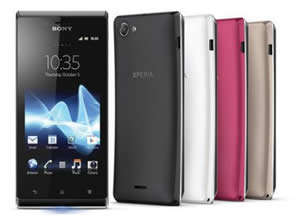
Xperia is a well known brand of smartphones that are a part of the Sony Mobile. The Xperia brand was initially a collaboration with Ericsson but has since then been dissolved. Now, Sony has single handedly taken it upon itself to ship out new phones, while maintaining the level of quality and design of the older versions. In order to garner response for its new line of smartphones, the company started marketing the Sony Xperia T as the Bond phone, which is featured in the movie Skyfall. Xperia J is the shy, younger brother of the Bond phone, and is also cheap to boot.
The Xperia J was announced in October 2012 as a cheaper variant of the Xperia T, resulting in the phone sporting a similar design to the T. The Xperia J features a 4-inch scratch-resistant TFT touchscreen that offers a pixel density of 245. The pixel density is the not the best among the contenders, but that does not hinder the high-res display that is visible on the phone. The display shows quite smart and sharp images, with very accurate color representation. The display also has excellent viewing angles and does is less reflective under sunlight.
The design of the phone is also quite similar to Xperia T. The phone comes with a plastic chassis that has a sturdy built. The Xperia J has an arched back similar to Xperia Arc series, which is pleasing to hold and grip. The silver plastic lining that graces the other Xperia series has been shifted to the bottom and acts as a second LED indicator during calls. The phone is also quite light, weighing only 124 grams. The Timescape UI is very similar to the original Google Android UI and basically seems like cheap imitations. The phone has three capacitive buttons on the bottom of the screen, Back, Home and Menu buttons. The buttons are placed on the far bottom of the device, making it more prone for the user to drop the device. The top of the device houses the 3.5mm jack, while the left side has the USB/charging port. The right side of the device is quite busy with the power/lock key on the top right hand and the volume rocker just below the power key.
The device is powered by 1 GHz Qualcomm processor and only 512 MB, which makes the device a little glitch and lagging when trying to shift screens as well as switch apps. The device, when not multitasking and doing basic functions, still lags a little. The device comes with 4 GB of internal space, of which only 2 GB is available to the user. This is very little compared to phones that are offering 8/16/32 and even 64 GB. However, the company has provided a SD card slot that allows users to expand memory by another 32 GB.
The device houses a 5 MP rear camera with autofocus feature. Just above it, a LED flash light can also be found. However, the front camera and the video recording capabilities are a little disappointing. Both, the front camera and video recording are VGA, which does provide the best resolution. The 5 MP camera is pretty decent, but if you have gotten used to the high-res 8 and 12 MP cameras, this camera will not at all be pleasing. The camera takes decent photos, but it isn’t sharp, clear or even HD for that matter. However, the phone does come with juice, 1750 mAh to be exact. This ensures that the phone last a couple of days when not in constant use and at least a full day when working with it all day. The company does offer features such as Wi-Fi hotspot, Bluetooth and USB, but it does not offer NFC capabilities.
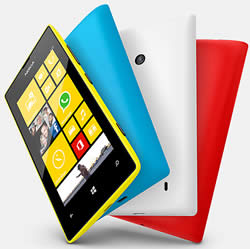 Nokia is a Finnish cell phone company, well known for its superb battery power and durability of its phones, and is the only phone that has not yet integrated its smartphones with Android. Nokia has been single-handedly leading Microsoft Windows OS 8 in the smartphone market. Most of the smartphones have become a pricy accessory to own, and if people opt for a cheaper phone, they must sacrifice on some features. To make a mark in the low- to mid-range smartphone market,
Nokia is a Finnish cell phone company, well known for its superb battery power and durability of its phones, and is the only phone that has not yet integrated its smartphones with Android. Nokia has been single-handedly leading Microsoft Windows OS 8 in the smartphone market. Most of the smartphones have become a pricy accessory to own, and if people opt for a cheaper phone, they must sacrifice on some features. To make a mark in the low- to mid-range smartphone market,
Nokia has announced the Lumia 520, which should be available in April 2013 in India (release dates for the rest of the world is yet unannounced) and is currently up for pre-orders on many websites. It has even reached to the second-spot following Samsung Galaxy Grand on the Indian website, Flipkart. The phone is a variant of its big brothers 820 and 920, minus some ‘flash’ features. The Lumia 520 is a 4-inch IPS capacitive touchscreen smartphone that offers 480x800 pixels display, which offers approximately 233 ppi. This is pretty good display screen for a mid-range smartphone.
The Lumia 520 is a bar phone with the straight sharp edges and is available with the standard Windows Tile layout. The phone comes with 8 GB internal memory that can be expanded up to 64 GB. The phone offers 1 GHz on its dual-core snapdragon S4 and only 512 MB RAM, which is slightly disappointing. Another let down is the lack of a secondary camera, which makes it difficult to video conferencing. The phone does offer a 5MP autofocus primary camera, with 4X digital zoom and no flash. However, the company claims to use the same digital lens that is found on the flagship.
The camera offers features such as Landscape orientation, Auto and manual exposure, Auto and manual white balance, Cinemagraph lens and Smart Shoot lens. The smart shoot lens allows the user to change individual objects in the photo and replace them with objects from the other photos. For example: incase the user is taking photos of two people; however, he does not like the expression of one person in the photo, they can swap the face for another face from another photo. The phone is customizable with changeable shells. The phone has a monoblock casing with the sleep/wake button, camera button and volume buttons on the right-hand side of the phone. Nokia also offers the Windows Office, plus Nokia Music and Nokia Maps. The phone also offers many different features including 7GB free SkyDrive storage.
The information for the detailed table about the two phones has been taken from Sony Mobile website, Nokia website, techradar.com and GSMArena.com
|
|
Sony Xperia J |
Nokia Lumia 520 |
|
Launch Date |
October 2012 |
April 2013 |
|
Company |
Sony |
Nokia |
|
Size |
124.3 x 61.2 x 9.2 mm |
119.9 x 64 x 9.9 mm |
|
Display |
4-inch scratch-resistant TFT touchscreen |
4'' IPS LCD capacitive touchscreen |
|
Screen |
480 x 854 pixels (~245 ppi pixel density), 16 million colors |
480 x 800 pixels (~233 ppi pixel density) |
|
Protection |
Corning Gorilla Glass |
Scratch-resistant glass |
|
Weight |
124 grams |
124 grams |
|
2G Network |
GSM 850 / 900 / 1800 / 1900 |
GSM 850 / 900 / 1800 / 1900 - all versions |
|
3G Network |
HSDPA 900 / 2100 - ST26i HSDPA 850 / 1900 / 2100 - ST26a |
HSDPA 900 / 2100 - RM-914 HSDPA 850 / 1900 / 2100 - RM-915 HSDPA 850 / 1700 / 1900 / 2100 - RM-917 |
|
4G Network |
N/A |
N/A |
|
GUI |
Timescape UI |
Windows Phone 8 |
|
CPU speed |
1 GHz Qualcomm processor |
1 GHz Dual-core Snapdragon S4 |
|
GPU |
Adreno 200 |
Adreno 305 |
|
OS |
Google Android 4.0 (Ice Cream Sandwich) |
Microsoft Windows Phone 8 |
|
Chipset |
Qualcomm MSM7227A Snapdragon |
Qualcomm MSM8227 |
|
RAM |
512 MB |
512 MB |
|
SIM Size |
miniSIM |
microSIM |
|
Internal Memory |
4 GB (2 GB available to user) |
8 GB |
|
Expandable Memory |
Up to 32 GB |
Up to 64 GB |
|
Sensors |
Accelerometer, Proximity sensor, Magnetometer |
Brightness control, Orientation sensor, Ambient light sensor, Accelerometer, proximity |
|
Connectivity |
GSM GPRS Up to 86 kbps (download). Up to 86 kbps (upload); GSM EDGE Up to 237 kbps (download). Up to 237 kbps (upload); microUSB v2.0; DLNA; Wi-Fi hotspot; Wi-Fi; Bluetooth |
GSM, WCDMA, Micro-USB, Bluetooth, Wi-Fi |
|
Data |
GPRS, EDGE, WLAN, Wi-Fi hotspot, Bluetooth and USB. |
GPRS, EDGE, WLAN, Bluetooth, USB. |
|
Speed |
HSDPA, 7.2 Mbps; HSUPA, 5.76 Mbps |
HSDPA, 21.1 Mbps; HSUPA, 5.76 Mbps |
|
WLAN |
Wi-Fi 802.11 b/g/n, DLNA, Wi-Fi hotspot |
Wi-Fi 802.11 a/b/g/n, dual band |
|
Bluetooth |
Bluetooth v2.1 with A2DP, EDR |
Bluetooth v3.0 with A2DP |
|
USB |
microUSB v2.0 |
microUSB v2.0 |
|
Primary Camera |
5 MP 2592х1944 pixels rear camera |
5MP, autofocus camera |
|
Secondary Camera |
VGA (0.3 MP) front camera |
No |
|
Video |
VGA |
720p@30fps |
|
Camera Features |
|
|
|
Sound Enhancement |
xLOUD Experience Clear Stereo |
None |
|
Audio supported formats |
MP3/ eAAC+/ WMA/ WAV player |
MP3, AMR-NB, WMA 10 Pro, GSM FR, WMA 9, AAC LC, AAC+/HEAAC, eAAC+/HEAACv2, ASF, MP4, AAC, AMR, MP3, M4A, WMA, 3GP, 3G2 |
|
Video supported formats |
MP4/ H.263/ H.264/ WMV player |
MP4, ASF, WMV, AVI, 3GP, 3G2, M4V, MOV |
|
Battery Capacity |
Removable Li-Ion 1750 mAh battery |
Li-Ion 1430 mAh battery |
|
Talk time |
2G: 5 hours 36 min 3G: 607 hours |
2G: 14.8 hours 3G: 9.6 hours |
|
Stand-by |
2G: 7 hours 18 min 3G: 618 hours |
3G: 360 hours |
|
Available Colors |
Black, White, Pink, Gold |
Yellow, red, cyan, white/black |
|
Messaging |
SMS (threaded view), MMS, Email, IM, Push Email |
SMS (threaded view), MMS, Email, Push Email, IM |
|
Browser |
HTML5, Adobe Flash |
HTML5 |
|
Radio |
Stereo FM radio with RDS |
No |
|
GPS |
GPS with A-GPS support |
Yes, with A-GPS support and GLONASS |
|
Java |
Java via Java MIDP emulator |
No |
|
Additional Features |
|
|
Image Courtesy: sonymobile.com, nokia.com





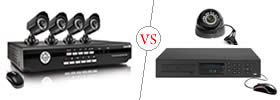
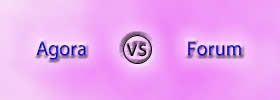

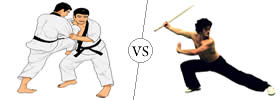
Add new comment